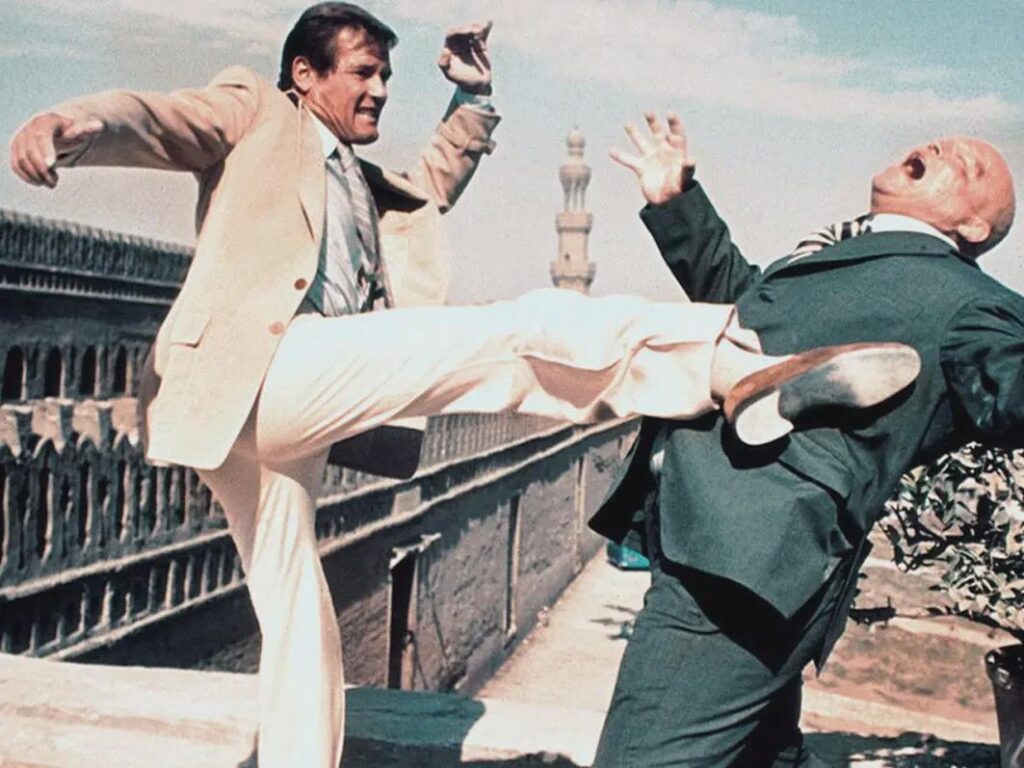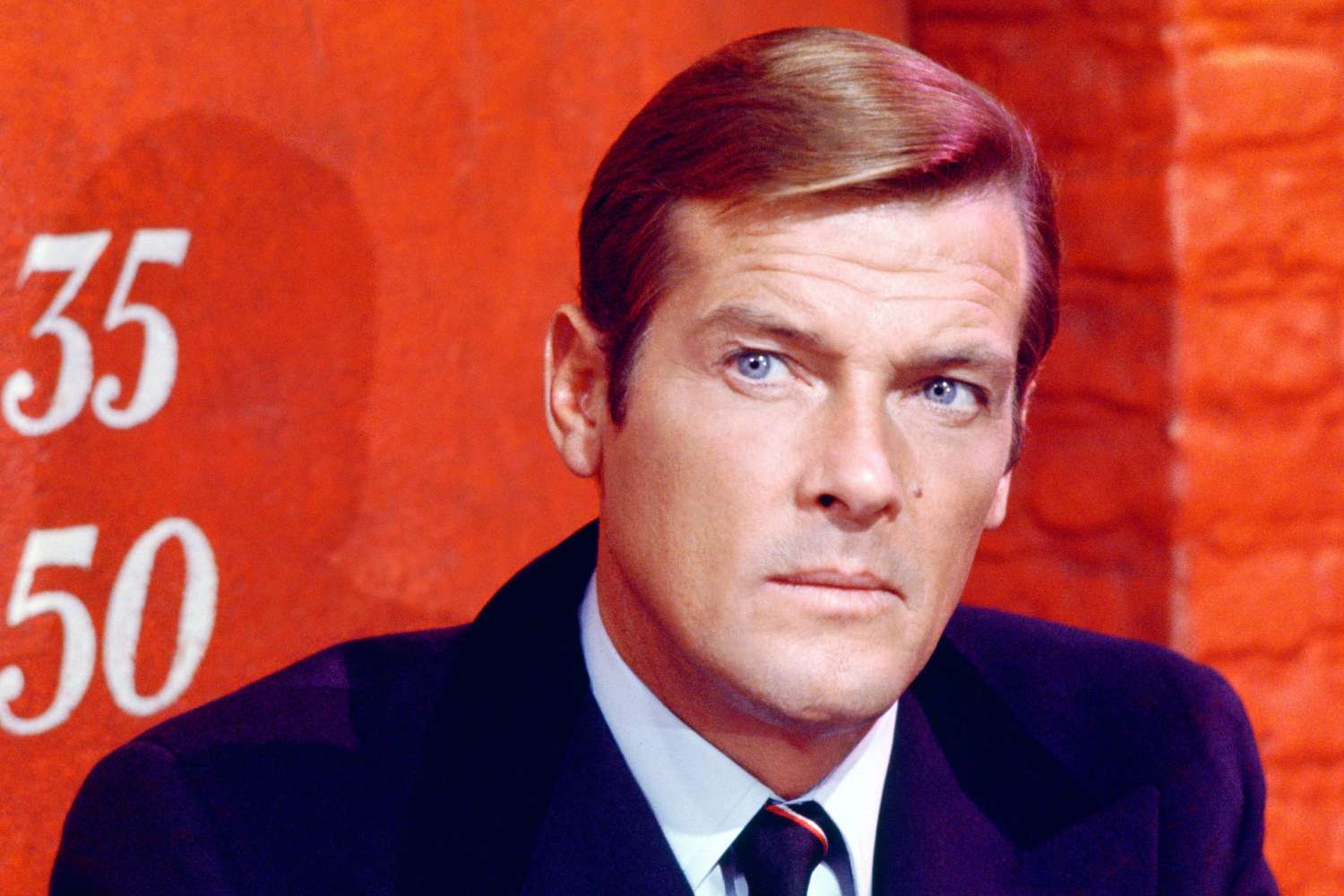The James Bond era of Sir Roger Moore is often credited with transforming the action genre, infusing it with a unique blend of campy humor, lighthearted escapism, and larger-than-life spectacle. This period, beginning with Moore’s debut in Live and Let Die (1973) and spanning seven films through A View to a Kill (1985), introduced a distinctive style that would leave a lasting impact on action cinema.
The Origins of “Brainrot” in the Action Genre

However, this era is also frequently critiqued as the origin of a “brainrot” phase in the action genre—a shift that, many argue, led to a decline in storytelling depth, character complexity, and emotional stakes. The Moore Bond era, with its emphasis on extravagance over substance, is seen as sparking a trend toward shallow, formulaic action films, setting the stage for an industry increasingly built on visual spectacle and reduced narrative engagement.
The Shift Toward Fantastical Scenarios

One key factor in this “brainrot” accusation lies in the increasingly fantastical scenarios Moore’s Bond films embraced. While earlier Bonds, especially Sean Connery’s, retained a gritty realism grounded in Cold War espionage, Moore’s films leaned into improbable, almost cartoonish storylines that traded plausibility for spectacle.
In Moonraker (1979), for example, Bond’s mission leads him to space to thwart a villain’s plan for a space-based genocide—an outlandish scenario far removed from the grounded, spy-versus-spy origins of the character.
Such excessive plots, which also included facing off with voodoo practitioners in Live and Let Die and chasing down a high-tech submarine in The Spy Who Loved Me, redefined Bond films as pure escapist entertainment rather than grounded thrillers. While audiences flocked to these films for their novelty and spectacle, the trend encouraged a new norm in which plot coherence and realism became secondary to visual extravagance.
The Invulnerable Hero Archetype

As Moore’s Bond became more fantastical, he also became more invulnerable, contributing to the “brainrot” phenomenon by popularizing a type of action hero who faced little real danger or emotional consequence. Unlike Connery’s Bond, who occasionally displayed fear, struggle, or moments of genuine vulnerability, Moore’s Bond was an almost untouchable figure, breezing through perilous situations with his signature grin and flippant humor.
This near-invincibility translated to a lack of stakes: audiences grew accustomed to action sequences where they felt confident the hero would survive without a scratch, regardless of the danger.
This shift, solidified by Moore’s Bond, influenced a generation of action films, fostering the rise of similarly invulnerable characters in movies like Rambo and Commando, where protagonists seemed immune to harm and untouched by trauma. The stakes in these films felt diluted, leading to what some call “brainrot”—a genre that prioritized style over substance, excitement over emotional depth.
The Influence of Humor in Action

Moore’s Bond also marked a turning point in the integration of humor into action, setting a precedent for films that would later fuse the genres of action and comedy. His frequent use of witty one-liners, even in the most dangerous situations, made light of threats and softened the suspense of tense moments. While this humor made Bond more approachable and entertaining, it also undermined the gravity of the scenarios he faced.
This humorous detachment, adopted by countless action movies in the years that followed, contributed to the “brainrot” effect by conditioning audiences to expect humor even in life-threatening situations.
Films like Indiana Jones and Lethal Weapon later embraced this tone, reinforcing a trend where laughs were often prioritized over meaningful tension, and danger became little more than a vehicle for humor. The genre’s increasing reliance on humor ultimately made it harder for audiences to take these stories seriously, eroding the suspense and engagement that defined earlier action films.
The Enduring Influence of the Moore Bond Formula

Over time, the influence of Moore’s Bond era on the action genre became both widespread and self-reinforcing. The formula it established—over-the-top plots, indestructible heroes, and humor as a buffer to suspense—became a template for action films throughout the 1980s and beyond.
Audiences grew accustomed to this pattern, creating a cycle of demand and supply that solidified “brainrot” as a defining characteristic of the genre. As action movies prioritized visual spectacle and high-stakes stunts over storytelling depth, the genre shifted away from the gritty, psychological nuances that had once characterized the best spy and action films.
Moore’s Bond, in essence, laid the foundation for a genre that increasingly sacrificed substance for surface-level thrills, often to the detriment of character development and emotional engagement.
A Double-Edged Legacy
In retrospect, the “brainrot” effect of Moore’s Bond era was not a failure in entertainment but rather a recalibration of audience expectations. By delivering escapism and spectacle, Moore’s films entertained millions and left an indelible mark on pop culture. Yet, this influence came with a cost.
In making the Bond franchise more fantastical and lighthearted, Moore’s era transformed action cinema, setting it on a path where the genre’s heart—the complexity of character, the tension of realism, and the depth of narrative stakes—was often overshadowed by shallow spectacle. The era’s influence continues to be felt, with modern blockbusters often following the same formula of style over substance, making Moore’s Bond a double-edged legacy that both redefined and arguably “rotted” the action genre.

Chaitanya Tuteja is someone who enjoys sharing his thoughts on books, movies, and shows. Based in India, he appreciates exploring different stories and offering honest reflections. When not reflecting on his favorite media, Chaitanya enjoys discovering new ideas and embracing life’s simple moments.

